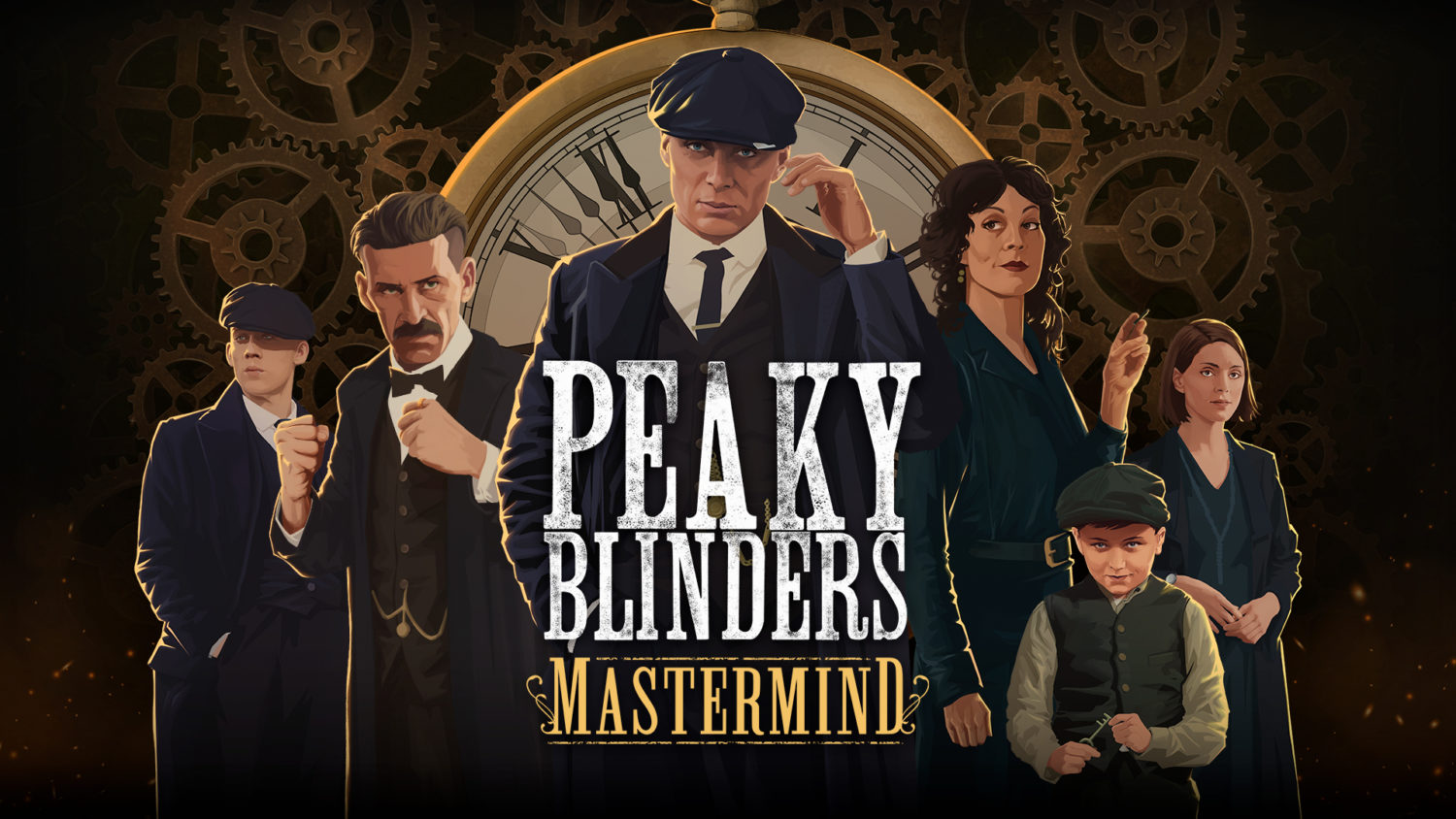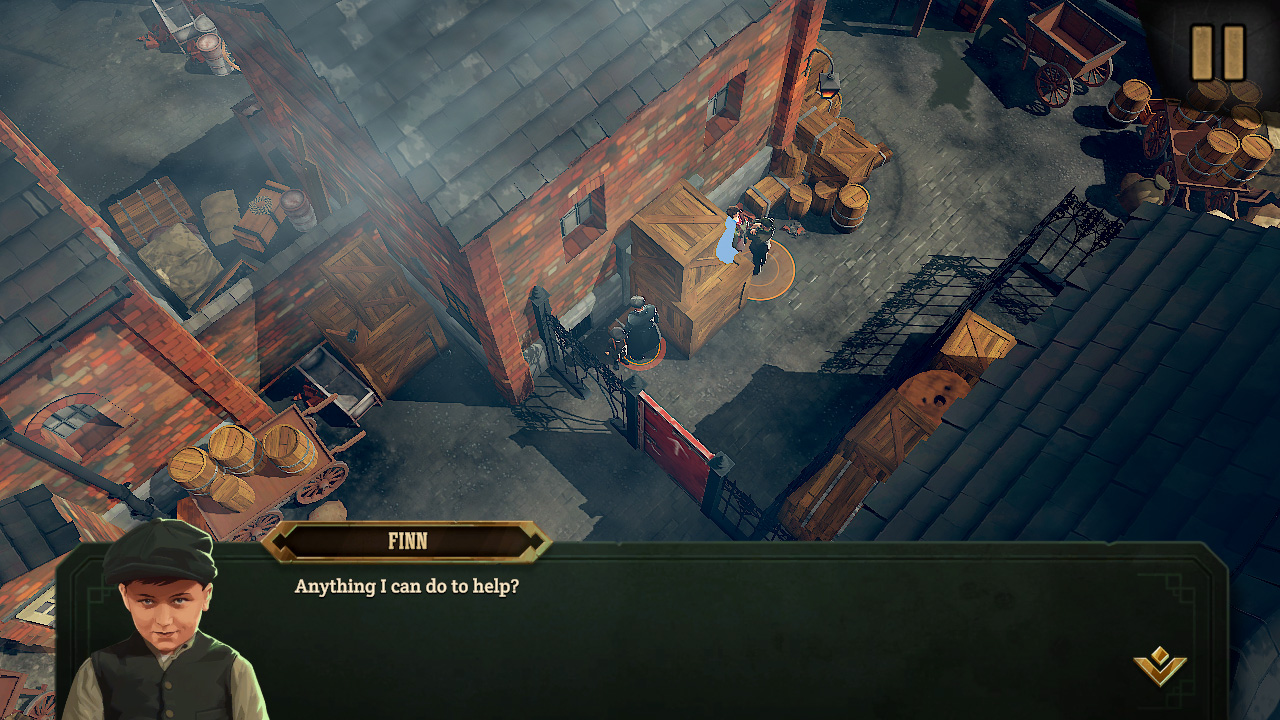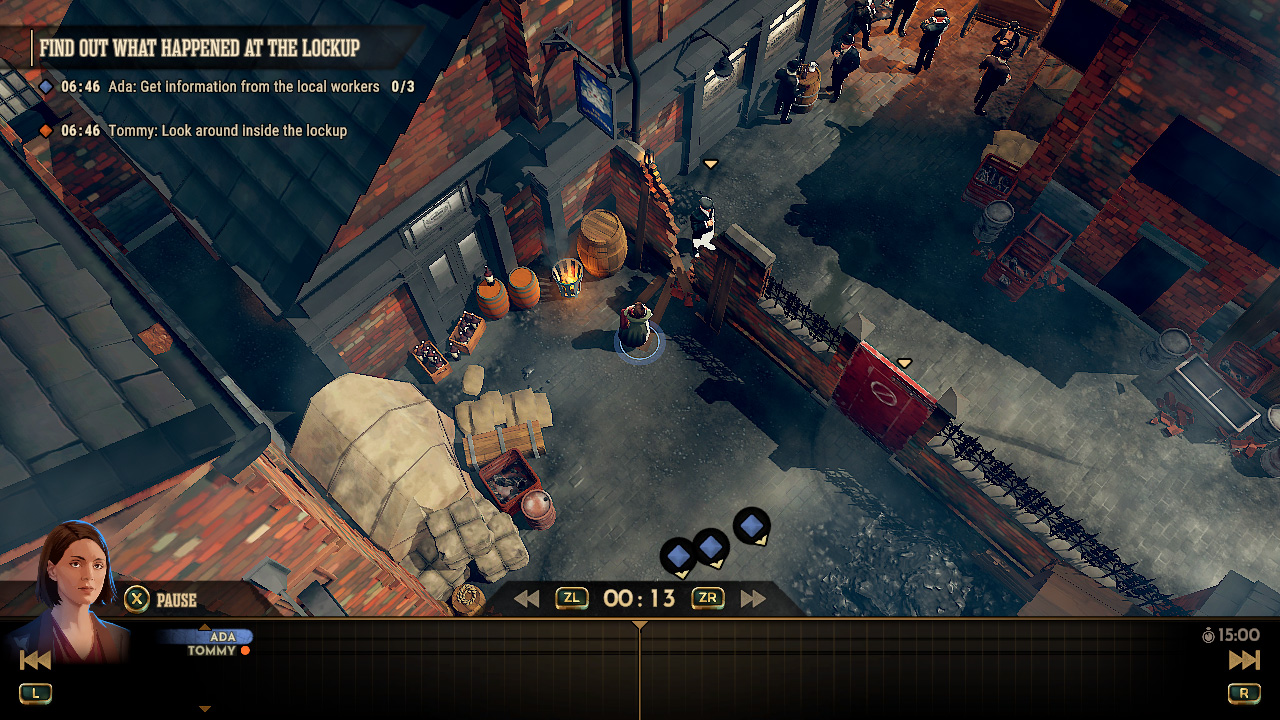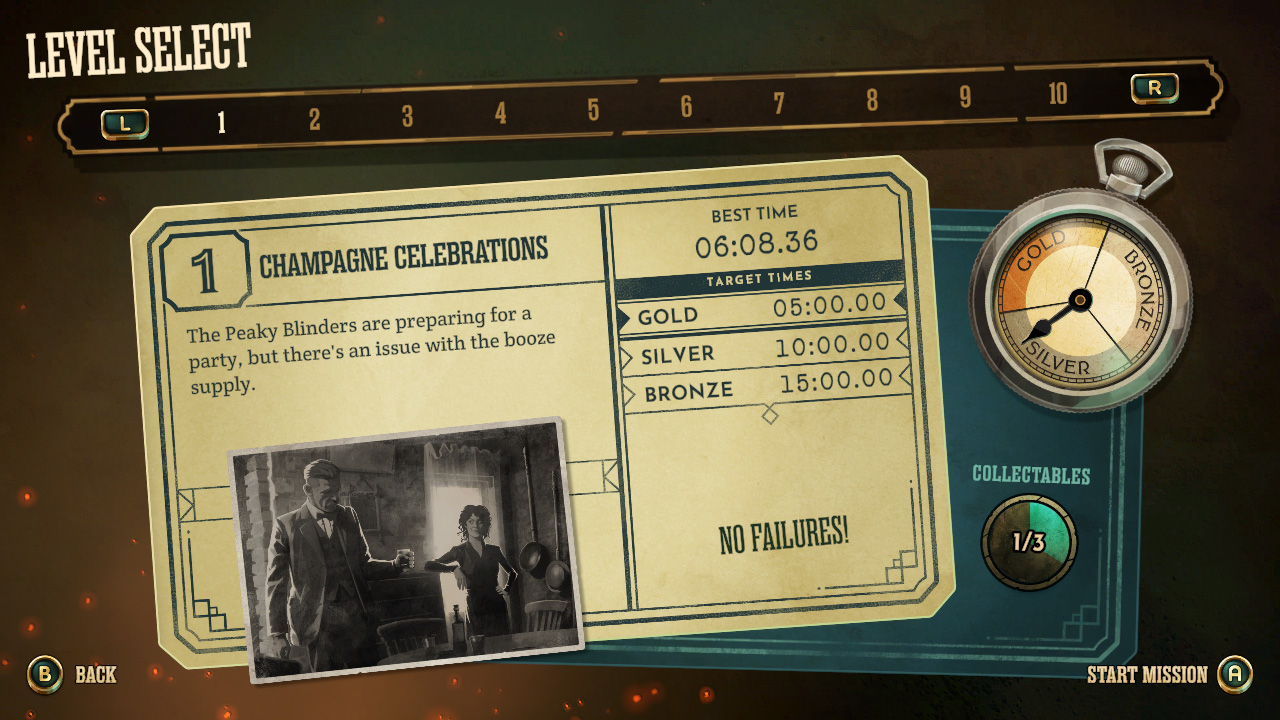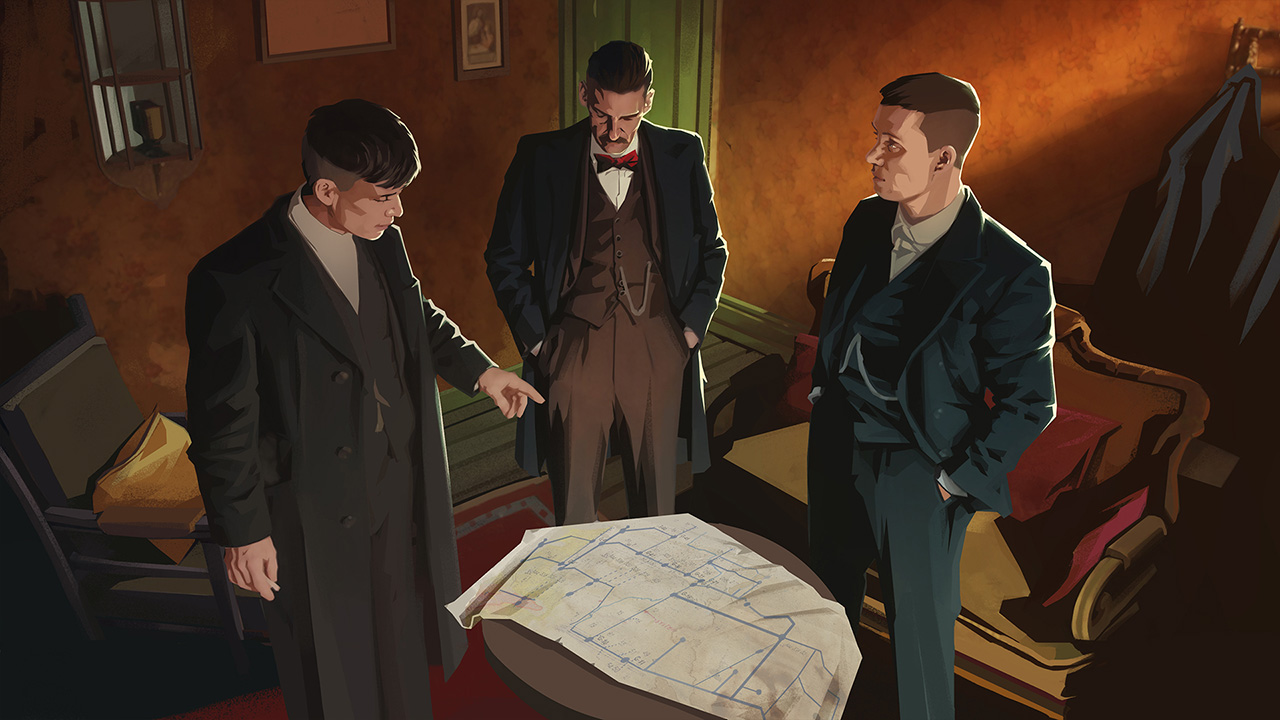Stealth, strategy, and flat caps.
Full disclosure, I’ve never seen a single episode of Peaky Blinders. Being an American, I didn’t think the word “peaky” had been used since the mid-’90s. But that’s precisely why I took this review. Can an adventure/puzzle game work when it’s based on a TV show I’ve never seen? Ends up it can.
Peaky Blinders: Mastermind is set in Birmingham, England, around the end of World War I. The game assumes players have watched the show, and offers little in the way of character introductions or narrative set-ups. It starts, in fact, with a couple of characters returning from a vacation and thanking some others for holding down the fort. Does that tie in to a particular season? Doesn’t matter, really. What does matter is that the Peaky Blinders need to steal some champagne in order to celebrate.
You’ll be asked to select the difficulty when you first launch the game. I wisely chose the easier mode, as it made the proceedings much simpler to get through until I grasped the flow of the game, which took a little time. The general point of each level is to complete tasks as efficiently as possible. You do this by controlling the flow of time, allowing you to move multiple characters to necessary positions in order to advance. For example, let’s say you need to open a locked gate so the main character, Tommy, can get past it. There’s a hole in the fence nearby, but only the young boy, Finn, can fit through. So, you need to move Tommy near the door, then reverse time and take control of Finn to move him through the fence hole to open the gate for a few seconds. You then backtrack a bit again, reclaim control of Tommy, and move him through the door.
That’s the gist of the game, but the puzzles get much trickier. You’ll assume control of multiple characters who need to work in tandem in order to accomplish a mission’s goals within the set amount of time. Each character has his/her own skills, such as Finn’s aforementioned ability to squeeze through small places, Ada’s ability to distract men, and Tommy’s ability to move large objects.
The main gimmick, of course, is the time manipulation. A timeline is recorded at the bottom of the screen, showing you at what point certain actions happen (levers are flipped, guards are diverted, etc.) and who has already been moved. While rewinding, you can see the previously assigned characters moving in reverse motion. When you then take control of a different character, the recorded characters play out in real-time as you make the next assignment. You won’t always be able to see them because the sets can get pretty big, but you can trust that they’re doing what you told them to do.
The mechanic of rewinding time and controlling different people can get cumbersome, and if you accidentally take control of a character who has already been assigned, that character’s recording comes to an abrupt halt, forcing you to reprogram it. That makes sense, as you’ll sometimes need to reprogram them. Still, it’s something to watch out for when you’re stringing together more complex assignments.
The puzzles range from easy to tricky, and a few at the end take an awful lot of planning. Indicators appear on screen to guide you to your objective, although it’s rarely ever a straight line. This is the main reason why I was happy I selected the easier mode, as it gives you waypoints to hit. These serve to let you know if you’re completing tasks efficiently enough to complete the full level. Without them, you may reach the end and realize you’re not even close to getting things done, forcing you to start from the very beginning.
That doesn’t mean the game is high-pressure, however. If you’re not fast enough or get caught, you simply rewind and start from a previous point. As a result, your only real enemy is the clock and your desire to achieve the highest ranking and get all the bonuses.
I really like the look of Peaky Blinders: Mastermind, as the game creates effective sets that feel like city streets and warehouses of the early 19th century. Although it’s sometimes difficult to tell which objects can be manipulated, the graphics are clean and never really cheat you by hiding items or access points. Unfortunately, the game does suffer from framerate issues that seem to pop up at the weirdest times. They don’t impact gameplay, but they’re far too frequent.
Fans of the show may also be disappointed if they’re attached to particular characters. Here, they’re mostly just tailored jackets you view from a top-down, isometric view. Without any voice acting, they could really be anyone. The static dialogue segments between levels and general setting/goal of the puzzles directly reflect the show’s characters and themes, but it’s the puzzles that matter and make this game work. You’ll know who everyone is and get into the story’s flow within about five levels, so although you’re not likely to become emotionally invested in anything if you’re not already a fan, you’ll at least not feel like you’re in the dark.
As such, Peaky Blinders: Mastermind is a great game for puzzle fans. No other game really plays like it on the Switch, and its post-WWI setting is equally unique. The game didn’t inspire me to watch the show or learn more about the real Peaky Blinders, but I had a good time within the confines of the game.
Review: Peaky Blinders: Mastermind (Nintendo Switch)
Good
Although it’s based on a long-running British TV show, no previous knowledge is required to enjoy solving the tricky time-manipulation puzzles of Peaky Blinders: Mastermind. In a world where tie-in games are generally awful, this is a rare entry that works for show fans and non-fans alike.

